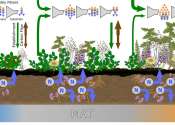Nordic wolverines have the worst genetic diversity status, comprehensive Eurasian-wide study shows
The Fennoscandian wolverines have the lowest genetic diversity out of all the wolverine populations in the vast Eurasian continent. The new study covers the Eurasian range of the wolverine, which has not been studied on such ...









